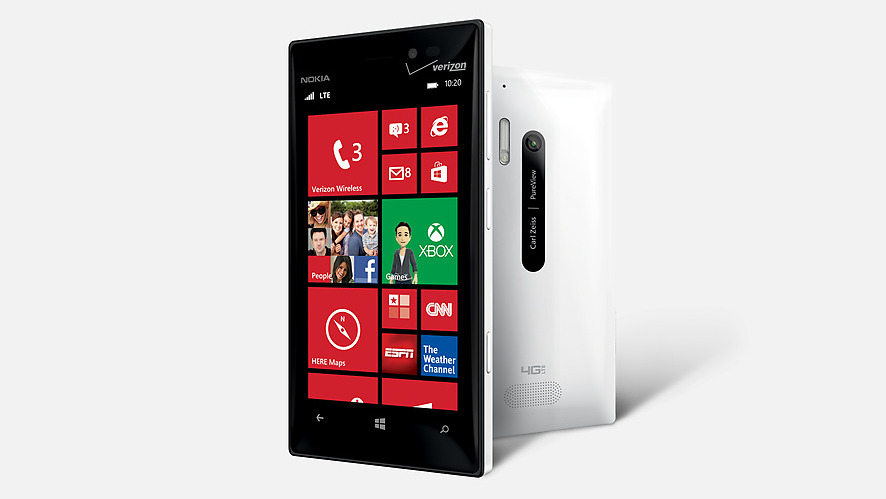TechRadar Verdict
Pros
- +
Smooth performance
- +
Sharp camera (esp. low light)
- +
Great Windows Phone 8 UI
- +
Verizon's 4G LTE is speedy
- +
Pretty good value for price
Cons
- -
Battery life is underwhelming
- -
Generic, clunky design
- -
Meager app selection
- -
No external storage
Why you can trust TechRadar
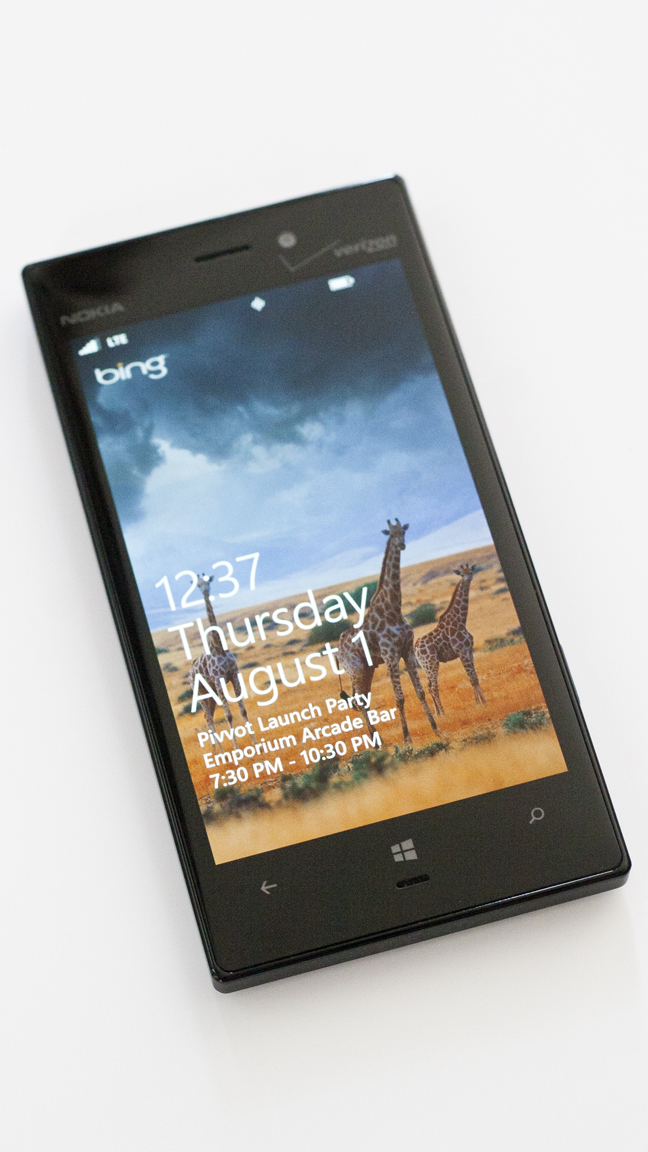
Nokia's Lumia line of Windows Phone handsets is best known for its bright colors and bold styling, but as the selection has grown and expanded across multiple carriers, not every such device has been so recognizable.
Case in point: The Nokia Lumia 928, exclusive to Verizon's 4G LTE network at a listed price of $99 on a two-year contract, is a bulky, bland slab available in just black or white, and it won't catch the eye of a passer-by with its generic styling.
But this Windows Phone 8 handset has other standout features – namely a great camera with a lens built for low-light conditions, not to mention a very sharp screen. And the WP8 interface is great on any device; here it's certainly no slouch.
But the WP8 platform is already several months old, with further hardware evolution now surely not too far off on the horizon, and there are many more distinctive phone options already out there – even within the Lumia line. As such, is this really a handset worth attaching yourself to for the next two-or-so years?
Design
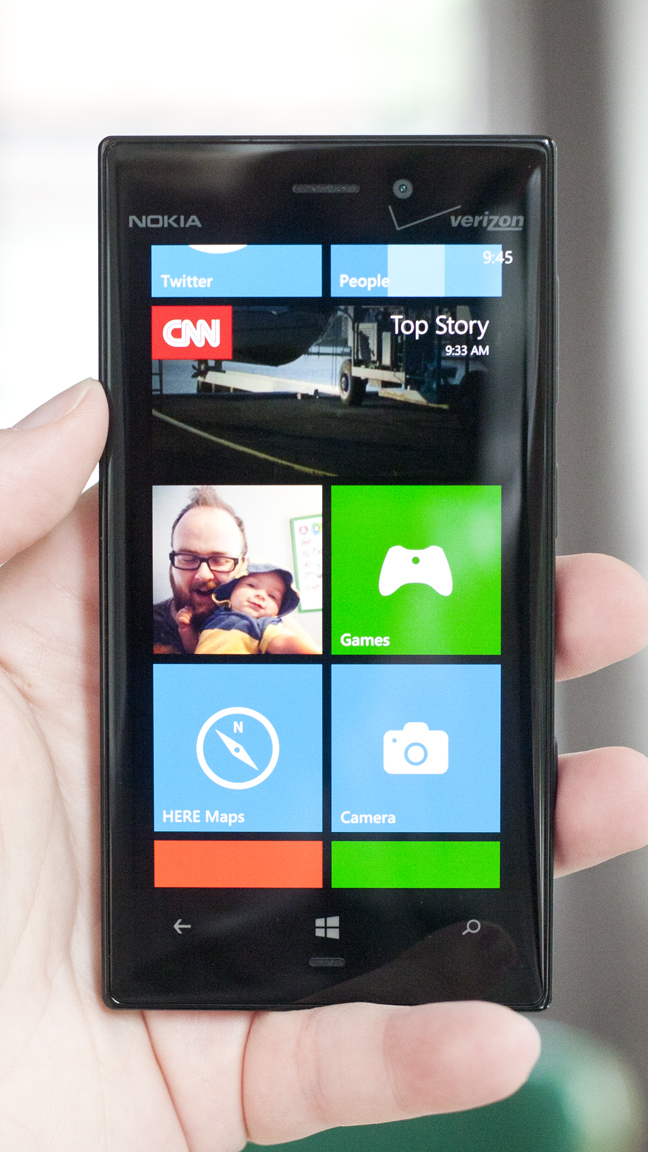
As noted above, the Lumia 928 isn't much of a looker when it comes to build design. It's not too far off from the Lumia 810 on T-Mobile in appearance, though the 928 lacks a removable backing plate and offers no access to the battery, nor any way to add external storage. However, it does feature built-in optional wireless charging, if you purchase a charging pad to place it upon.
On the front, the 4.5-inch display sits center beneath Nokia and Verizon logos, plus the 1.3-megapixel front-facing camera. On the bottom of the phone are the three standard Windows Phone touch buttons – Back, Start, and Search.
Flip the phone over and you'll find an 8.7-megapixel primary camera with Carl Zeiss optics, plus a Xenon flash alongside and the speaker grate near the bottom.
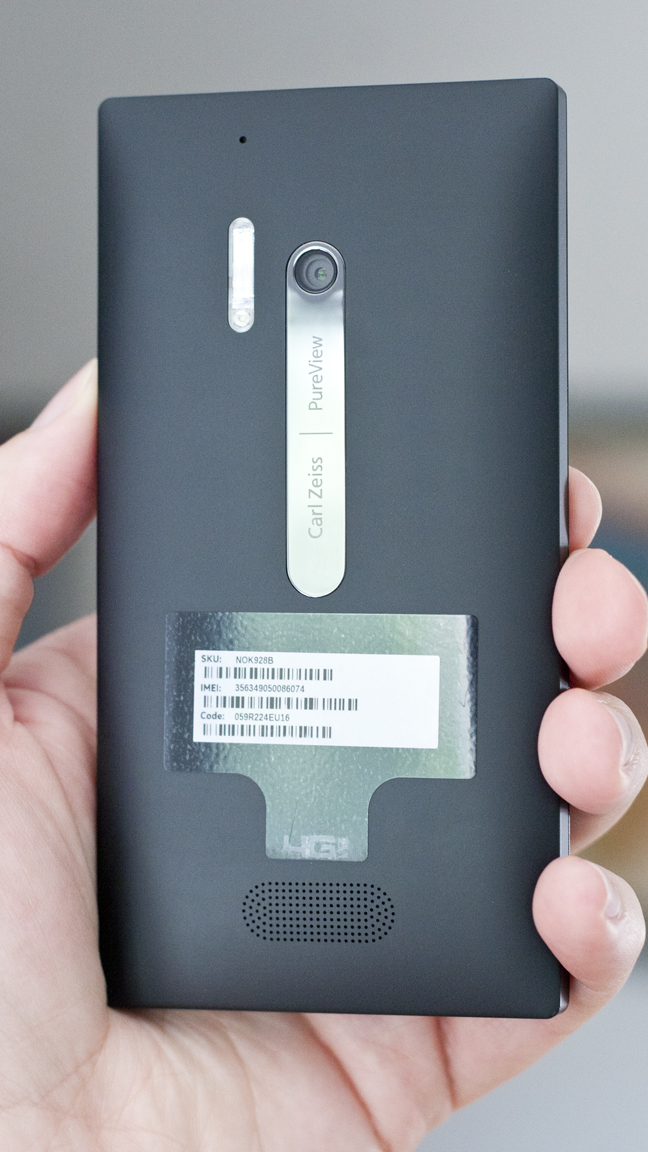
The right side of the phone houses the volume rocker, power button, and dedicated camera shutter button, which can also be held to pull up the camera/video app at any time. Up top are a headphone jack, SIM card slot, and mini-USB charging input, while the other two sides of the phone are smooth and unadorned.
It has a boxy shape to it, and despite a slight roundness to the corners, they'll dig into your palms during use. The Lumia 928 is a sizable handset, at 5.24 inches tall and 2.71 inches wide, but it's the heft that you'll really feel, as the phone comes in at 5.75 ounces. The slippery plastic panel on the back doesn't help matters when it comes to holding the phone in your hand.
Luckily, the display looks excellent, with the 1280 x 768 AMOLED screen showing crisp and clear results (and nice contrast) at a pixel density of 334 ppi, and it's also very responsive, even including setting that makes it usable while wearing gloves.
The Lumia 928 feels sturdy, in large part because there's no back panel to remove, but it's just not that comfortable to hold over the long haul. Add to that the lack of visual flair, and the device lacks physical appeal. Luckily, there's more to the 928 than what immediately catches the eye.
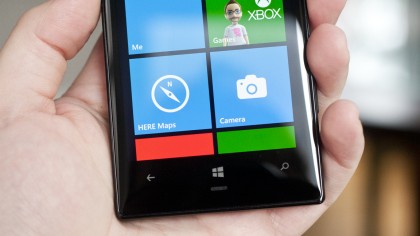
Inside, the Lumia 928 is essentially identical to last year's Lumia 920 (on AT&T), with a dual-core 1.5Ghz Snapdragon S4 processor and 1GB of RAM. Everything ran speedily in our testing, whether it was zipping through the OS or playing games – including the visually impressive Halo: Spartan Assault. The 32GB of internal storage is all you'll have aside from the cloud, as there's no option for external storage on the Lumia 928.
